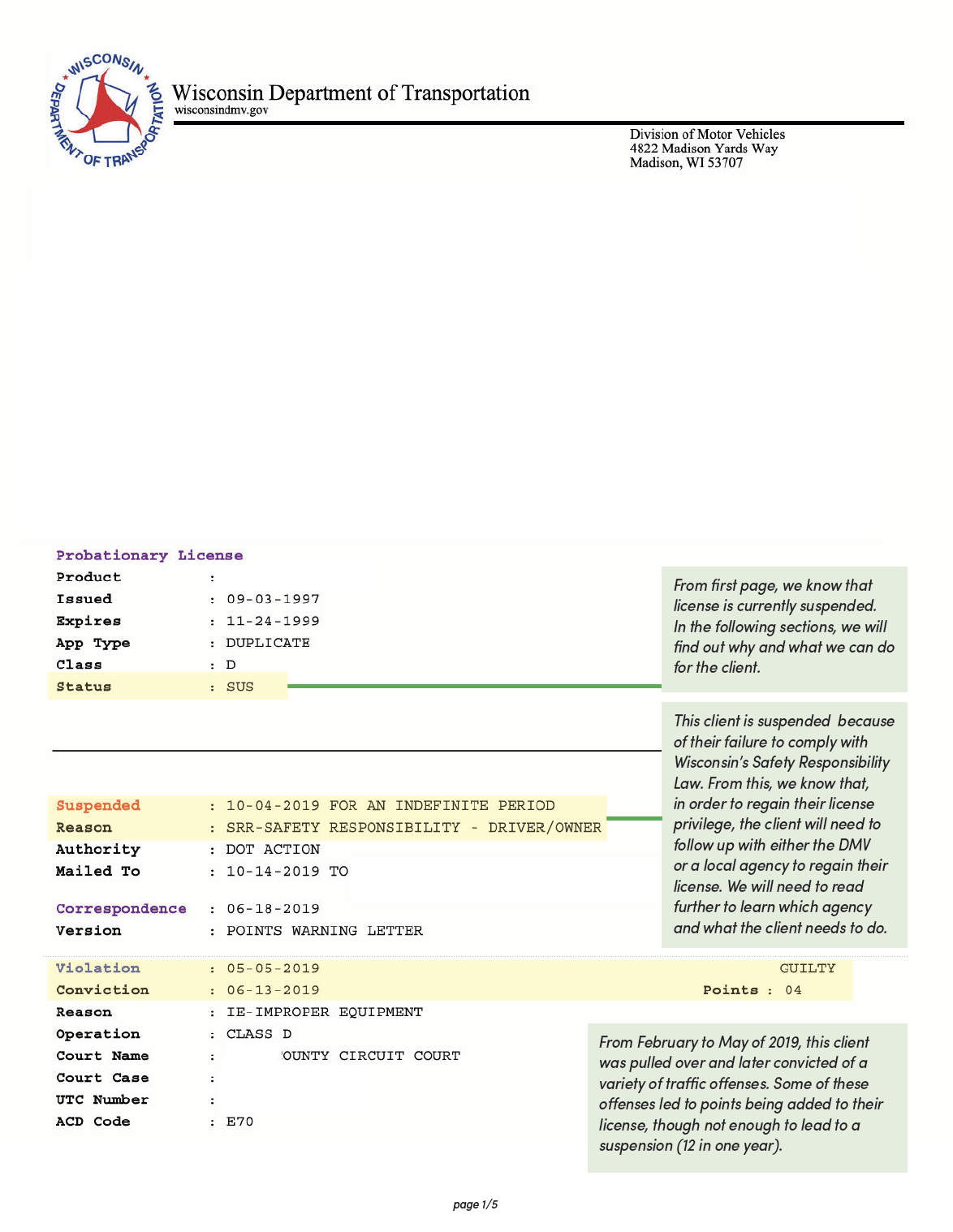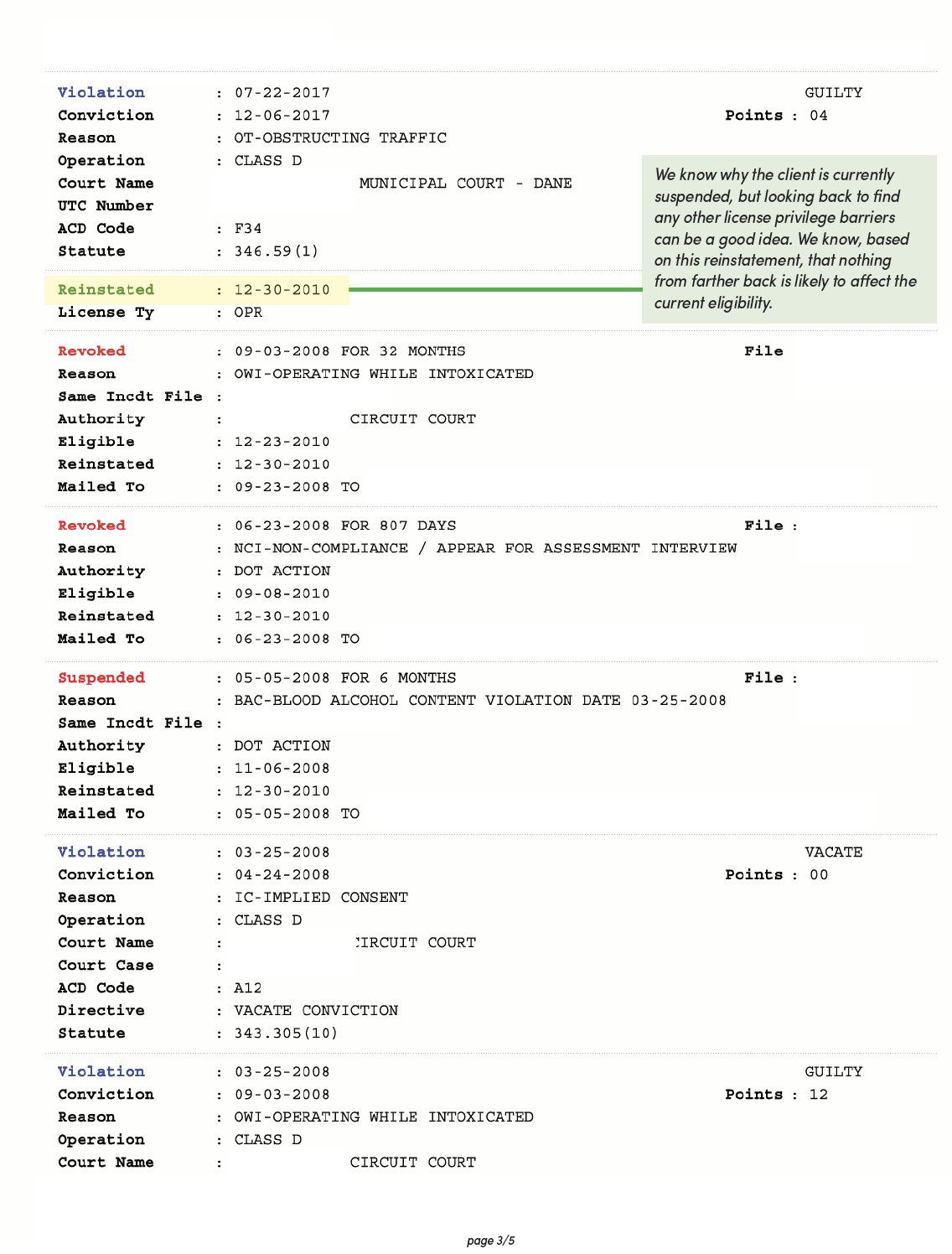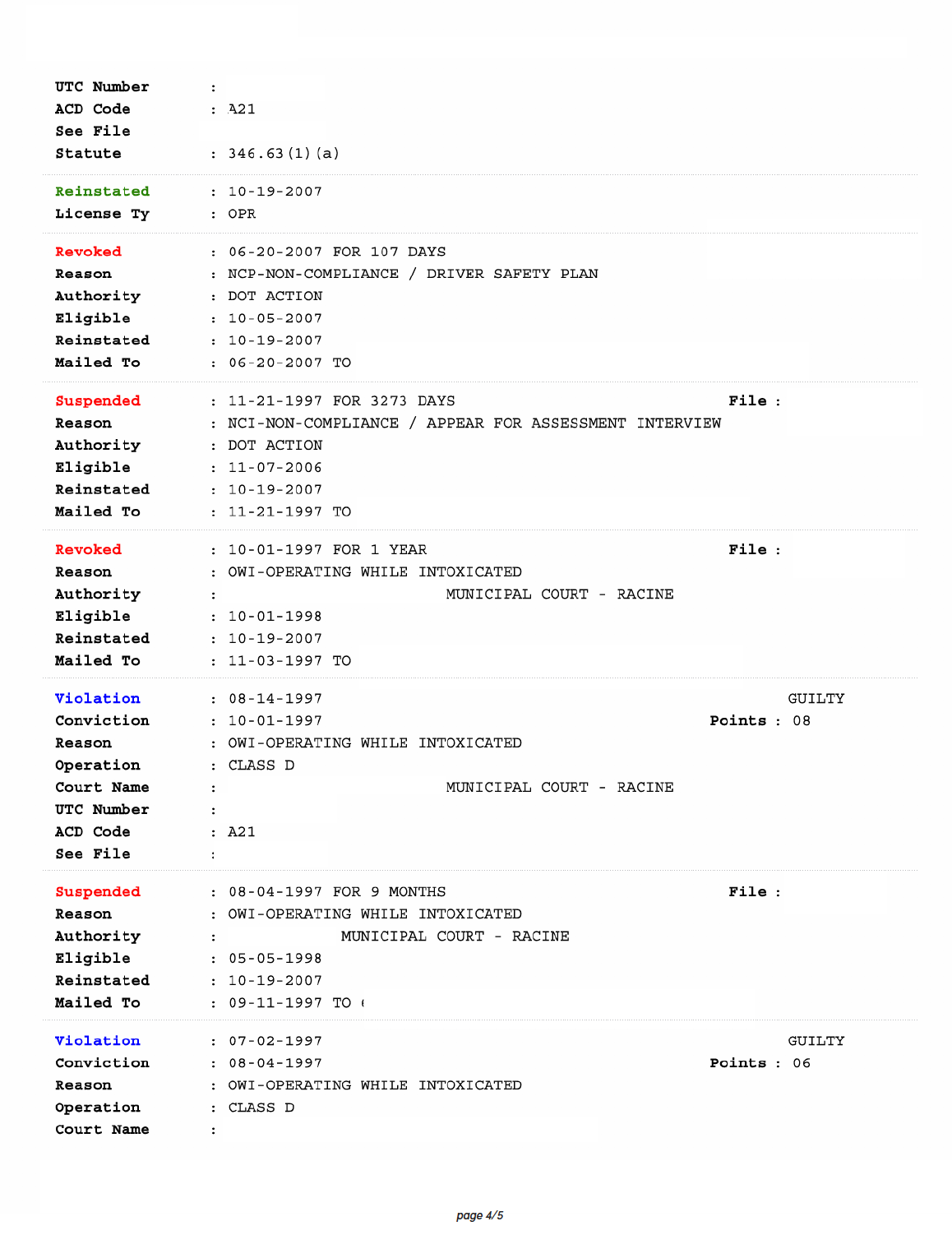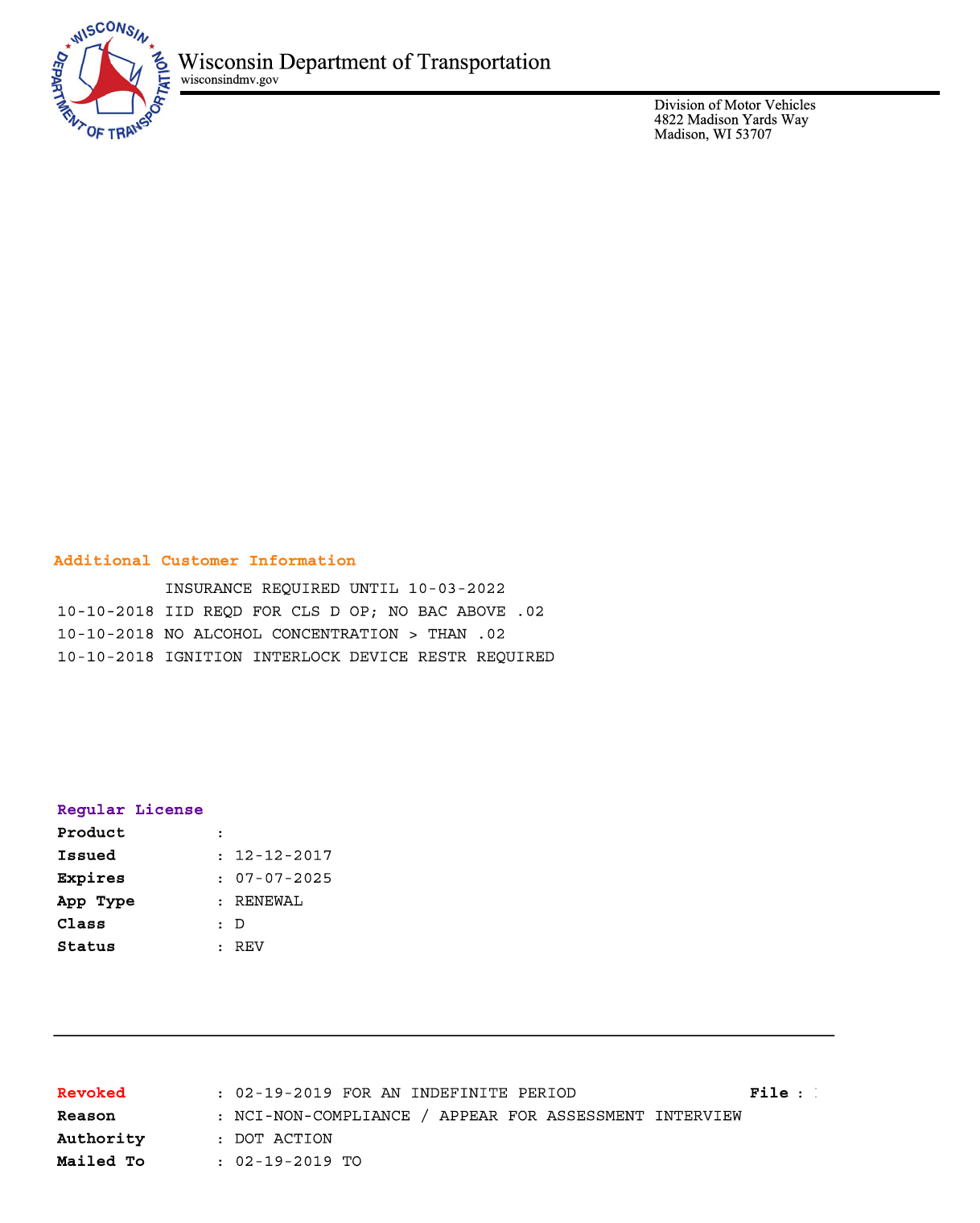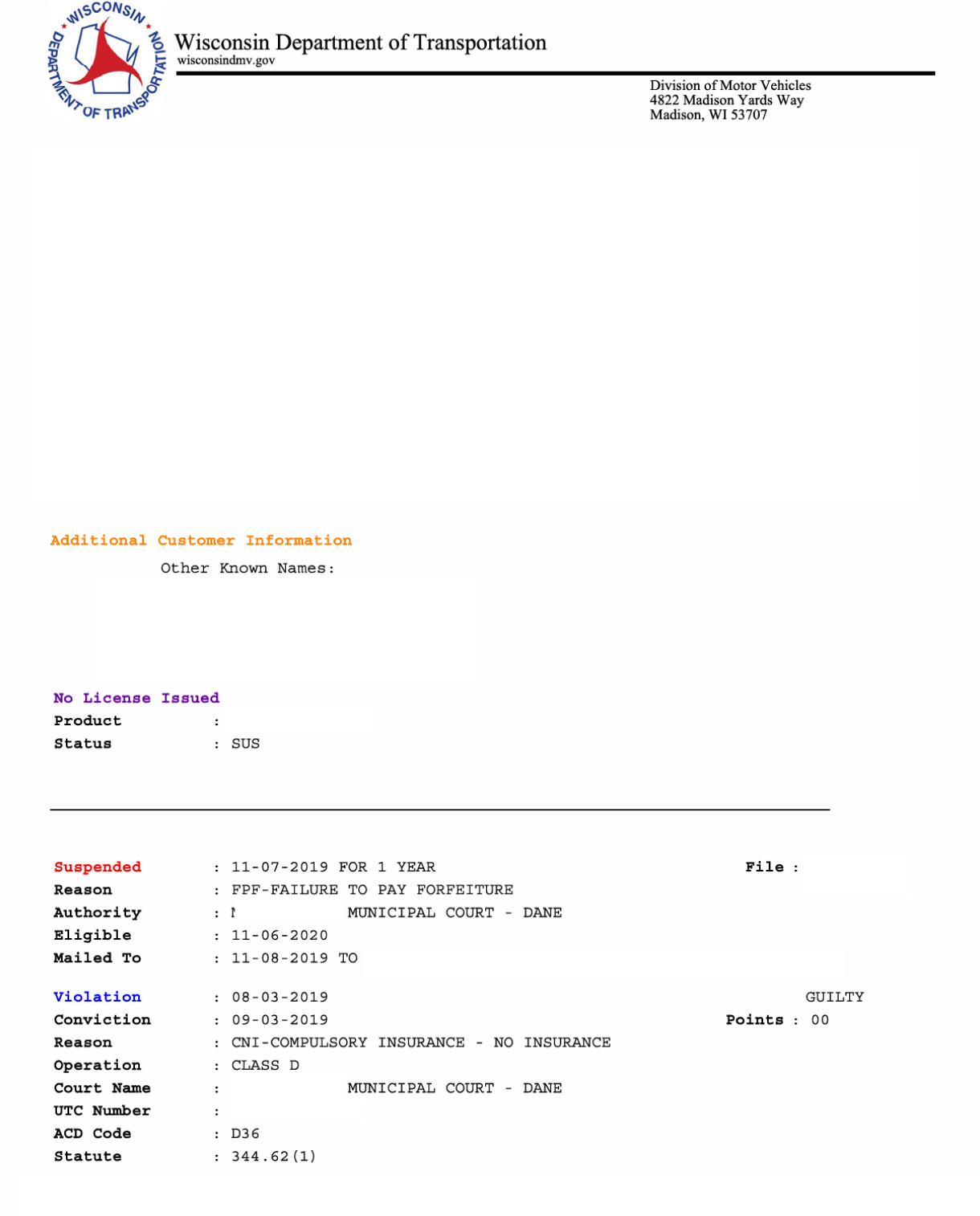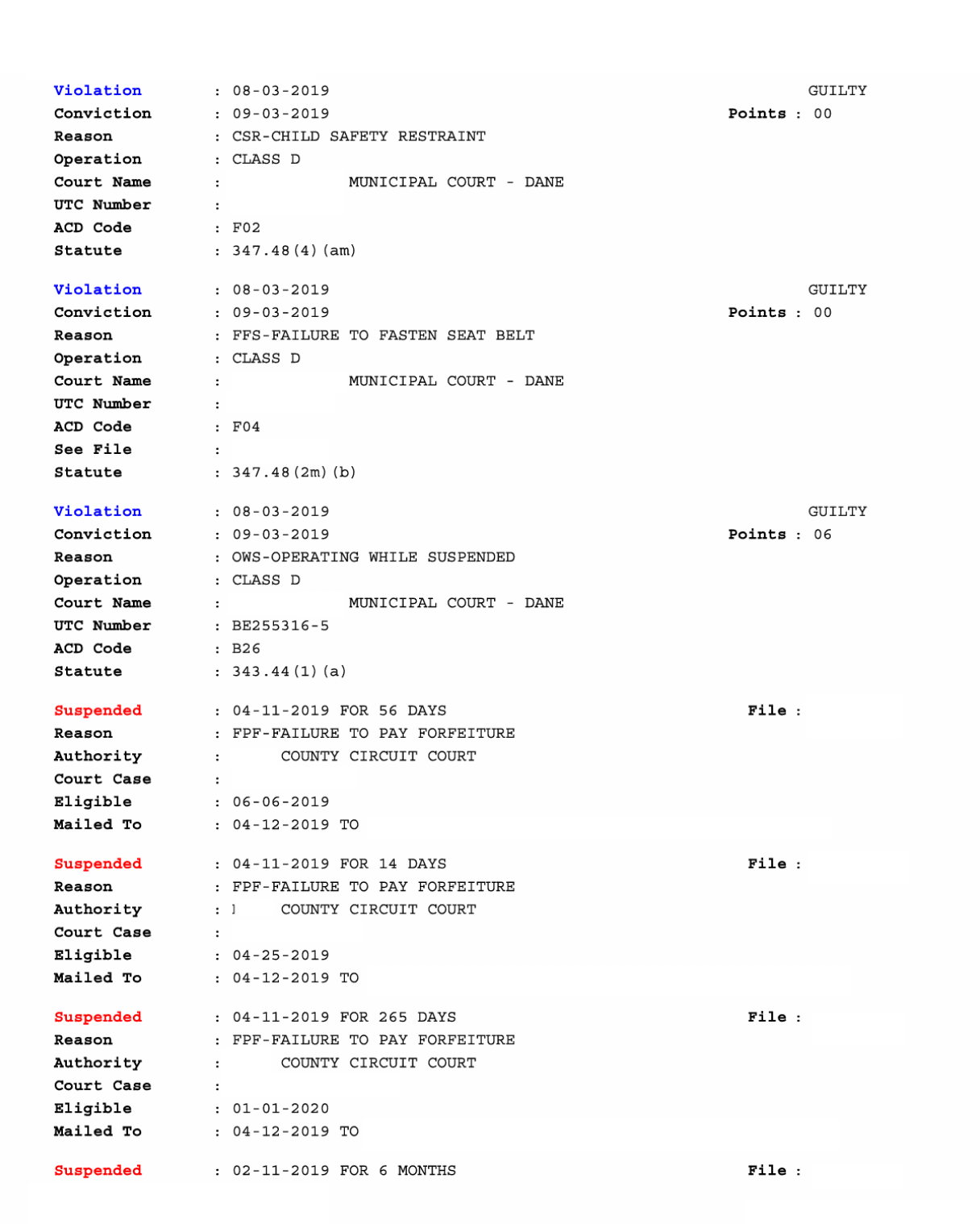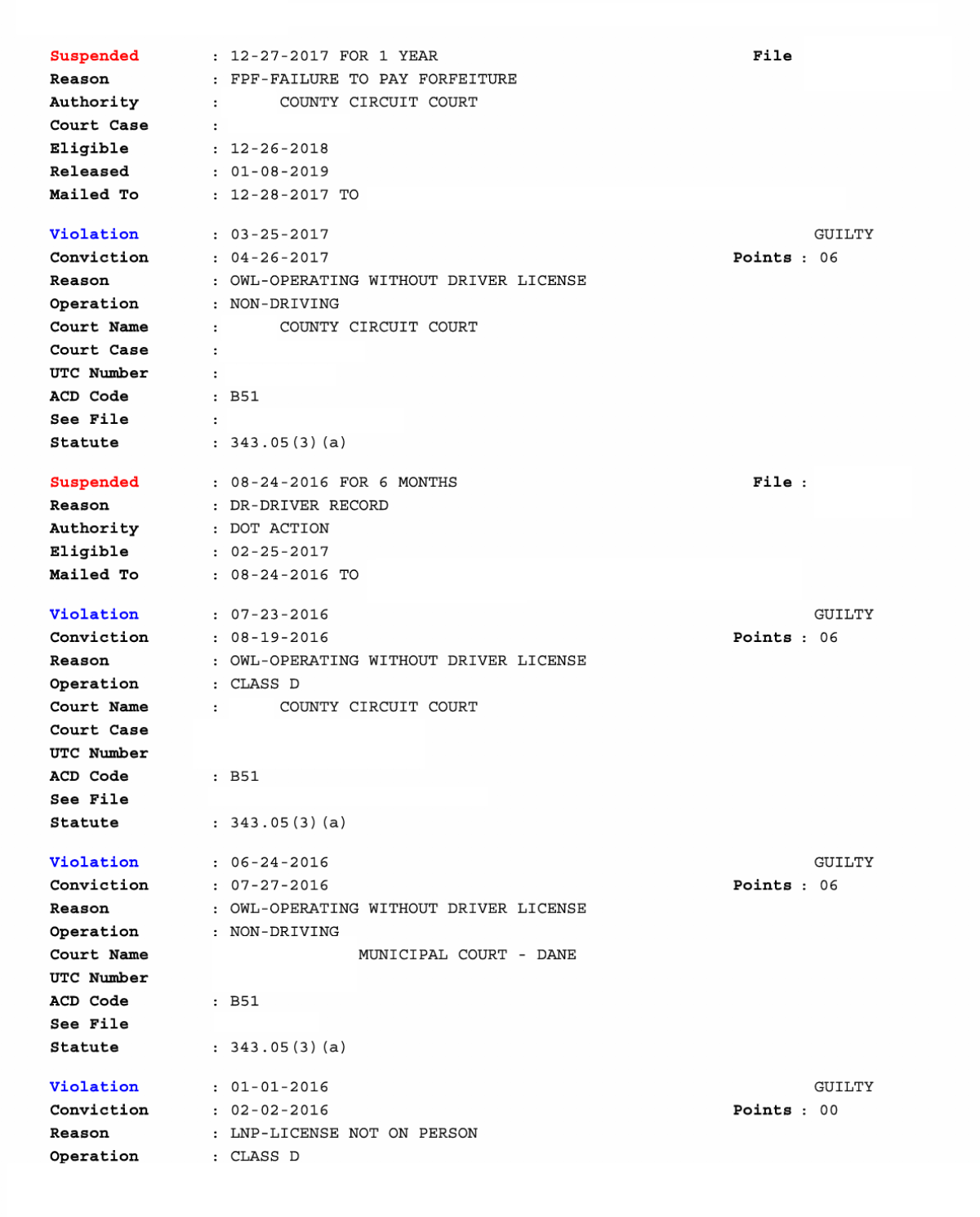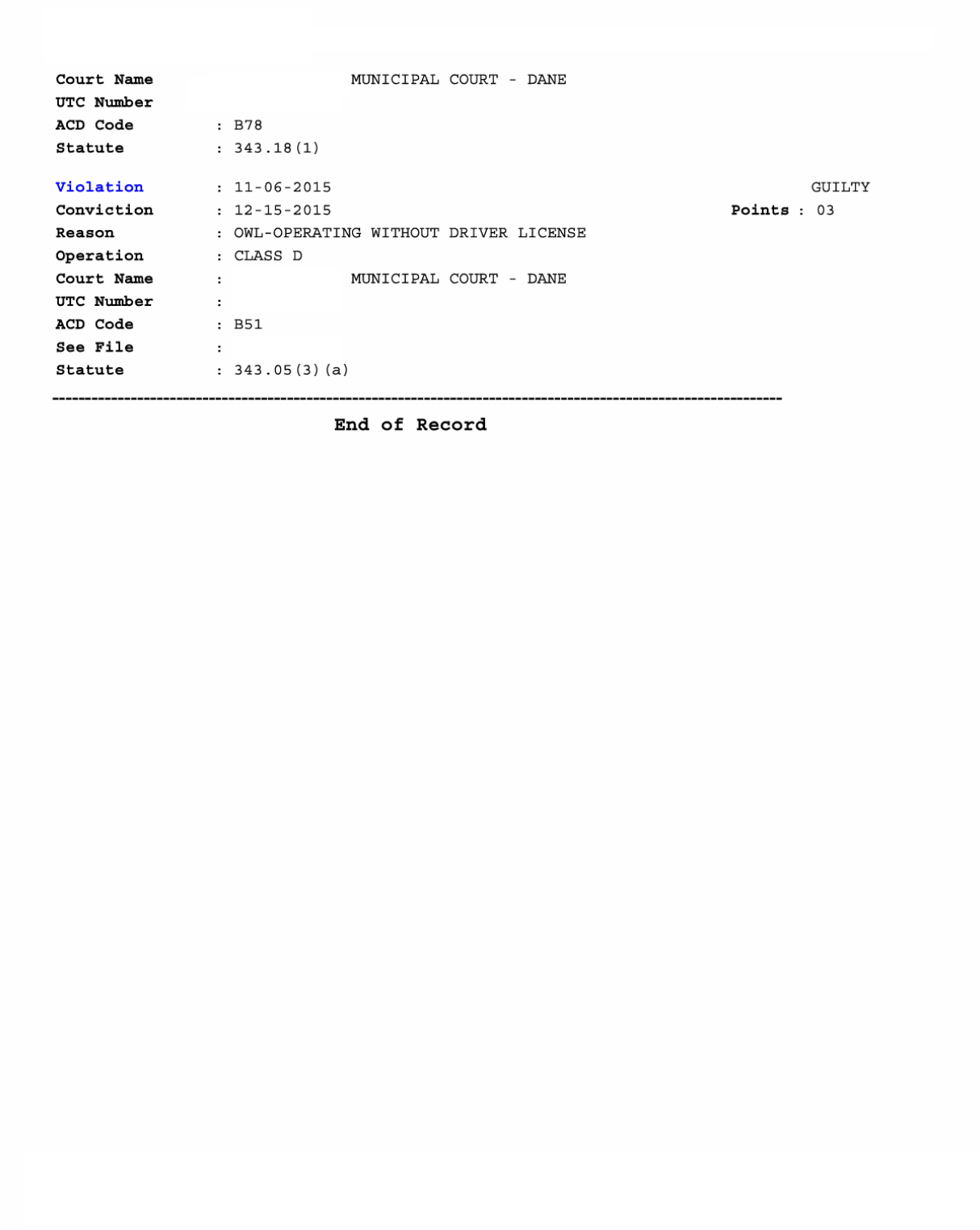7. Analyzing Abstracts
ABOUT ABSTRACTS
When you meet with clients, you need some tools to assess the client’s situation. One of the best tools is a driver’s abstract. An abstract is a list of a person’s complete driving record. The DMV has two online record systems. The first is called PARS (Public Abstract Request System and it requires the user to first set up an account. The second is a secure online service where individuals can obtain a copy of their driver record for $5.00 plus a 2% convenience fee.
Driving records can be confusing to read, especially for the lay person. So, let’s walk through the abstract to better understand its contents. The top of an abstract contains the individual’s general information, such as driver’s license number, hair color, weight, and date of birth. The next field is labeled “Additional Customer Information.” This section tells the individual’s license type, date issued, expiration date, class, and status. Most important is the license status, which will likely be “SUS” for suspended or “REV” for revoked.
One of the most important ways you can help someone seeking to reinstate a license is to understand the driver’s abstract. An abstract contains everything in a person’s driver’s record but it can be confusing to read.
The rest of the abstract is the driving record. The record proceeds from the most recent to the oldest violation/incident and contains information about violations, suspensions, and revocations.
Violations show:
- The date of the violation
- The date of the conviction
- The reason for the violation
- The license class
- The court name (municipal or state court) and case or citation number
Suspensions show:
- The date of the suspension and length of the suspension
- The reason for the suspension
- The authority or court information
- The case or citation number
- When the person is next eligible for a license reinstatement
- The DMV suspension or “S” number which is then also listed on the violation that led to the suspension
Revocations show:
- The date of revocation and length of revocation
- The reason for the revocation
- The authority
- The date of next eligibility to obtain a license
- The DMV revocation or “R” number which is then also listed on the violation that led to the revocation
If a person is convicted of certain violations in court, the person may be required to take a Right of Way safety course. If the person fails to take the course within six months of the conviction, the person’s driver’s license will be suspended until the course is completed. This suspension can last up to five years.
- The “Right of Way Course Required” is usually listed at the top of the driver’s abstract.
- To calculate the deadline for completing the course, count six months from the conviction date.
Sometimes, you will see that a driver’s license suspension has ended and the license was reinstated. The reinstatement date will be noted on the abstract. You can safely assume that those past suspensions or violations are not currently affecting the person’s driver’s license EXCEPT if there are still unpaid fines from the previous suspension. That money (the fine) is still owed as a debt. The fines and forfeitures don’t go away even if the suspension is over.
Below, you will find an annotated sample abstract that covers components you need to understand. Scroll across to see all of the entries and explanations.
STEPS WHEN MEETING WITH A CLIENT
The Legal Tune Up Tool will determine the answers to these questions. However, you should still be aware of these basic steps to cover with the person who is reinstating their driver’s license.
What are the barriers and how are they affecting the client’s driver’s license? To answer this question, determine the individual’s license status, and which of the suspensions or revocations are still in effect. Additionally, are there any expired suspensions for which unpaid forfeitures (labeled “FPF”) or damage judgments (labeled “DJN”) remain? Additionally, are there potential future barriers (e.g., unpaid tickets that have not yet caused suspensions)?
What can be done to address the barriers? If the suspension will expire soon, can the client “wait it out”? Could they seek a payment plan or community service instead of paying a forfeiture? Do they have enough money to pay off a forfeiture or damage judgment? Should a case be reopened to reduce the fine or reduce the demerit points?These options will be discussed in further detail later on.
What steps should I present to the client? Walk through the possible actions the client can take and the pros and cons of each option. Answer any questions. Discuss next-steps the client must take, such as scheduling an appointment to take a driving exam at the DMV. These options will be discussed in further detail later on.
Will further legal help be needed? LIFT may be able to provide them with a volunteer lawyer who may help them to resolve ongoing issues.
1. Looking at the “Additional Customer Information” what prediction can you make?
- The driver has a suspension/revocation for failure to pay a forfeiture
- The driver has a suspension/revocation for operating while suspended
- The driver has a suspension/revocation for operating while intoxicated
1. What is the current status of this individual’s driver’s license?
- Expired
- Revoked
- Suspended
